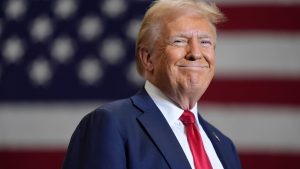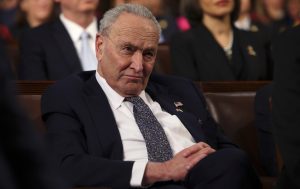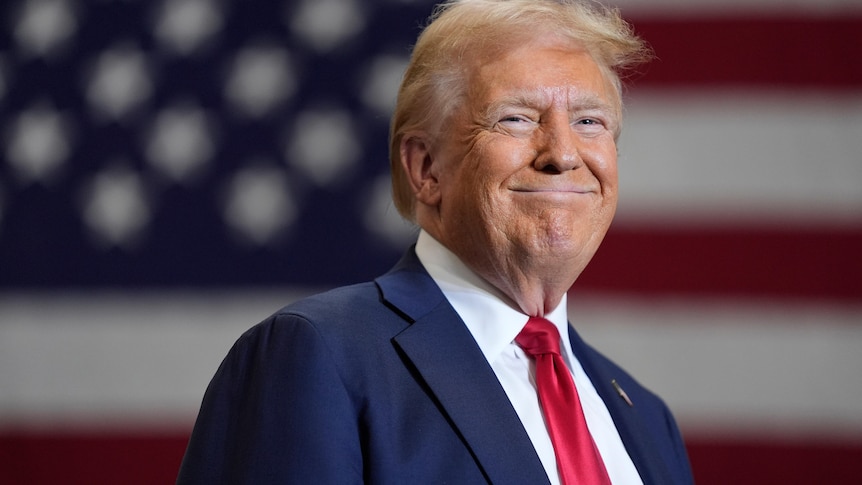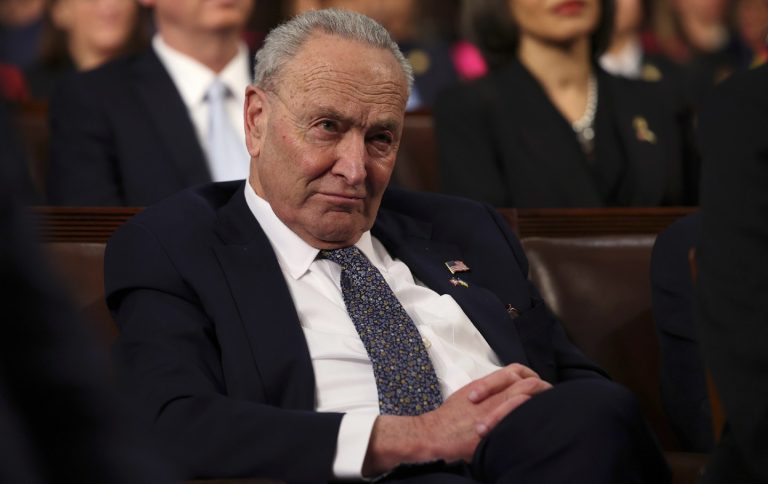‘High-income people’ won’t be eligible for the payout, the president says
Americans could be in for a significant financial boost following President Donald Trump’s new economic proposal — a “tariff dividend” that could put money directly into citizens’ pockets.
Republicans have long promised to return prosperity to everyday Americans, but this latest plan takes that idea to a whole new level. The president says the dividends would be funded by revenue collected from tariffs on imports, effectively sharing a portion of the government’s trade earnings with the people.
Trump unveiled the idea in a surprise Truth Social post on Sunday, November 9, where he wrote:
“People that are against Tariffs are FOOLS! We are now the Richest, Most Respected Country In the World, With Almost No Inflation, and A Record Stock Market Price. 401k’s are Highest EVER. We are taking in Trillions of Dollars and will soon begin paying down our ENORMOUS DEBT, $37 Trillion. Record Investment in the USA, plants and factories going up all over the place. A dividend of at least $2000 a person (not including high income people!) will be paid to everyone.”
While Trump did not specify when these payments would be issued, the announcement immediately generated intense public interest and debate. If implemented, the initiative could represent one of the most direct redistributions of trade revenue in U.S. history.
What Is the “Tariff Dividend”?
The “tariff dividend” refers to a proposed one-time payment to American citizens funded entirely by money the federal government collects from import tariffs. Trump’s idea essentially treats these revenues as profits from trade enforcement — and, rather than funneling them into general spending, he wants to give a portion directly to citizens.
In principle, tariffs are taxes on foreign goods, paid by importers when products enter the U.S. market. Trump argues that his aggressive trade policies have generated massive tariff revenue, creating an opportunity to reward Americans who have “borne the cost” of foreign competition.
The proposed payout of $2,000 per eligible individual would exclude high-income earners, though no official definition of “high income” has yet been provided.
Why the Proposal Is Gaining Attention
Trump’s announcement landed at a time when inflation has slowed, the stock market has hit record highs, and domestic manufacturing investments are booming. In his post, he claimed that the U.S. is now the “richest and most respected” country in the world, suggesting that the dividends would symbolize a new era of shared national prosperity.
For many Americans still recovering from years of economic turbulence, the idea of a direct payment is instantly appealing. It echoes the stimulus checks distributed during the COVID-19 pandemic — but this time, the funding would not come from government borrowing, but from money already raised through tariffs.
According to data from the Treasury Department, $195 billion in tariff duties were collected during the first three quarters of the year. While that’s a substantial amount, it may not fully cover a nationwide $2,000 payment for all eligible citizens. Still, Trump insists that tariff collections are at “record highs” and will soon reach the trillions, making the dividends financially feasible.
How It Might Work
Treasury Secretary Scott Bessent, when asked about the proposal during an interview on ABC’s This Week, said that the $2,000 “tariff dividend” could take multiple forms.
“The $2,000 dividend could come in lots of forms, in lots of ways,” Bessent explained. “It could be just the tax decreases that we are seeing on the president’s agenda — no tax on tips, no tax on overtime, no tax on Social Security, deductibility of auto loans.”
In other words, rather than a physical check, the dividend could manifest as tax relief or credits designed to increase disposable income.
Still, Bessent admitted he hadn’t yet discussed the details directly with the president, leaving open questions about the precise mechanism, the timeline, and how eligibility will be determined.
The Math Behind the Plan
A nationwide $2,000 payment to every adult would cost hundreds of billions of dollars. With roughly 160 million individual taxpayers, the total payout could reach around $320 billion.
That amount would surpass the federal tariff revenue collected this year — even with Trump’s expanded trade duties. To bridge that gap, the administration may have to stagger payments, combine the plan with other tax measures, or target only middle- and lower-income earners.
Trump, however, maintains that tariff collections will continue to rise as foreign manufacturers pay steep duties to access the U.S. market. He’s framed tariffs as both an economic and patriotic success story, claiming that they’ve spurred a resurgence in American industry while filling federal coffers.
High-Income Exclusion
The president’s promise to exclude “high-income people” is meant to ensure the dividends reach working- and middle-class Americans. However, he did not define what qualifies as “high income.”
Economists note that if the cutoff is similar to previous relief programs, individuals earning above $100,000 or households above $200,000 could be excluded. If this approach is taken, the total cost would be reduced and the impact concentrated among the majority of wage earners.
The Bigger Picture: Tariffs as a Tool for Prosperity
Trump’s return to aggressive tariff policy has already reshaped global trade. His administration has targeted sectors ranging from steel and automobiles to electronics and green technologies, arguing that these tariffs protect American jobs and industry.
The new proposal reframes tariffs not only as protectionist tools but as a form of national profit-sharing — taking revenue from global trade and redistributing it domestically.
In Trump’s view, tariffs are proof that America can fund its own growth without relying on debt or foreign borrowing. He’s repeatedly claimed that these policies have strengthened U.S. manufacturing, reduced inflationary pressures, and rebuilt domestic production capacity.
Critics, however, argue that tariffs often raise prices for consumers and disrupt supply chains. They warn that turning tariffs into a primary revenue source could invite retaliation from trade partners, potentially triggering economic headwinds.
The Potential Economic Effects
Short-term benefits:
If implemented, a $2,000 dividend or equivalent tax cut could inject billions of dollars into the economy, boosting household spending and confidence. Retail sectors could benefit significantly from a wave of new consumer cash, especially during the holiday season.
Long-term concerns:
Economists warn that while tariffs generate government revenue, they also raise the cost of imported goods, which can indirectly drive up consumer prices. If households receive $2,000 but face higher costs on groceries, electronics, and vehicles due to tariffs, the net benefit could shrink.
Others question whether such a dividend would be sustainable beyond a single round, especially if trade volumes decline or other nations retaliate with tariffs of their own.
The Political Implications
Politically, the “tariff dividend” fits neatly into Trump’s populist message: that his administration is putting America first and ensuring that ordinary citizens directly benefit from national economic gains.
The proposal also contrasts sharply with traditional conservative economic policies that emphasize tax cuts for corporations and the wealthy. Instead, this plan targets middle- and lower-income Americans — a key demographic in upcoming elections.
Some analysts see it as a strategic move to strengthen Trump’s economic record and shore up support among working-class voters who have felt left behind by globalization. Others view it as a high-risk gamble that could strain federal finances or complicate trade relations.
Expert Opinions
Economists are divided. Supporters say the idea could be an innovative way to redistribute trade revenue while maintaining fiscal discipline. They argue that if managed properly, tariff income could reduce the deficit and fund direct benefits without new taxes or borrowing.
Critics counter that tariffs function as hidden taxes on consumers. By redistributing that same money as a dividend, the government may simply be giving back what Americans already paid through higher prices.
Still, the proposal has generated excitement among Trump’s supporters, many of whom see it as proof that the administration’s “America First” policies are producing tangible rewards.
When Could It Happen?
So far, there’s no timeline. No executive order, legislation, or Treasury schedule has been released to outline when — or if — payments might begin.
Given the scale of the proposal, experts expect any such dividend would require congressional approval or, at minimum, a formal directive from the Treasury Department.
Until then, the “tariff dividend” remains an ambitious promise — one that could reshape how Americans think about trade, revenue, and government redistribution.
A New Form of Economic Patriotism?
Whether or not the plan materializes, Trump’s “tariff dividend” marks a significant evolution in his economic messaging. It blends his signature protectionist trade policies with direct populist appeal — rewarding citizens not through corporate growth or tax trickle-down, but through direct payment.
If realized, millions of Americans could see a one-time $2,000 boost to their income. If not, the proposal will still serve as a bold symbol of Trump’s effort to link economic nationalism with household prosperity.
Either way, it underscores a defining theme of his administration: using the tools of global trade to benefit the American people first and foremost.

Emily Johnson is a critically acclaimed essayist and novelist known for her thought-provoking works centered on feminism, women’s rights, and modern relationships. Born and raised in Portland, Oregon, Emily grew up with a deep love of books, often spending her afternoons at her local library. She went on to study literature and gender studies at UCLA, where she became deeply involved in activism and began publishing essays in campus journals. Her debut essay collection, Voices Unbound, struck a chord with readers nationwide for its fearless exploration of gender dynamics, identity, and the challenges faced by women in contemporary society. Emily later transitioned into fiction, writing novels that balance compelling storytelling with social commentary. Her protagonists are often strong, multidimensional women navigating love, ambition, and the struggles of everyday life, making her a favorite among readers who crave authentic, relatable narratives. Critics praise her ability to merge personal intimacy with universal themes. Off the page, Emily is an advocate for women in publishing, leading workshops that encourage young female writers to embrace their voices. She lives in Seattle with her partner and two rescue cats, where she continues to write, teach, and inspire a new generation of storytellers.









